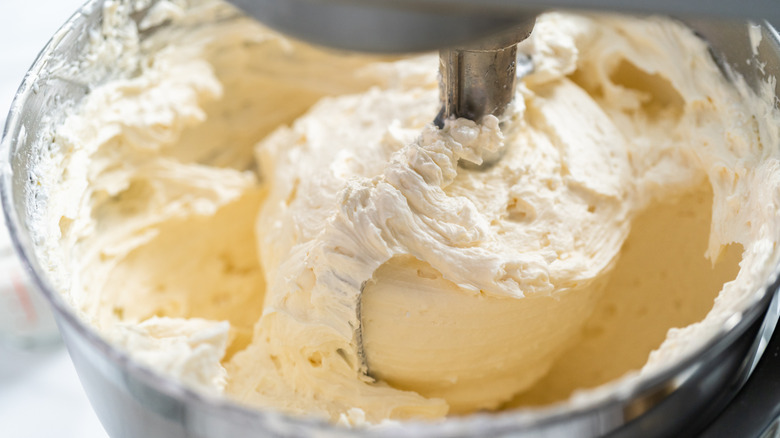The Key To Adding Just The Right Amount Of Liquid To Buttercream
What in the world would we do without buttercream? Sure there are other forms of frosting out there. We have ganache for our keto eaters, cream cheese frosting, and even meringues to pipe, slather and spread over our favorite baked desserts. But across the board buttercream is our favorite. It is fluffy, rich, and easy to make, flavor, and use to decorate even your sweetest carrot cake cupcakes (via Washington Post).
Classic vanilla buttercream, for those of you who prefer to eat it rather than make it, is made of powdered sugar, salt, buttermilk (or heavy cream), and of course a quality vanilla extract. It is the best kind of frosting to use, but even the most tried and true buttercream frosting has its issues. Your frosting could turn out grainy because you used the wrong sugar, or too runny because you used too much liquid. Luckily, for the latter problem, there is a solution.
One splash at a time
Buttercream is a balancing act. You need it to keep its fluffy whipped texture, but it also needs to be loosened with a little moisture in order to reach the desired effect. The Wilton Blog recommends adding only two teaspoons of liquid — whether it be syrup or cream — for each cup of frosting you plan on making. However, every buttercream recipe is different so a more careful approach to whipping up your frosting is to add your chosen liquid splash by splash and wait to see how each addition of liquid affects your mixture (via The Kitchn).
You'll know you've gone too far if your buttercream becomes super thin and runny; no longer keeping its fluffy peaks. Make sure to stop adding liquid the moment your frosting loosens up, but if you do add too much cream, don't panic. Leaf TV recommends adding cornstarch to your frosting to thicken it, but be careful here too. You don't want your mix tasting bland and powdery.

